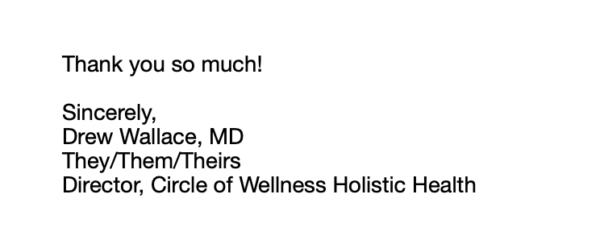
Email lets us communicate — or miscommunicate — at the speed of light. That’s why proofreading email is so important. Grammatical errors, bad links, and missing attachments signal a lack of professionalism, and a confusing sentence can send the wrong message altogether.
A solid email marketing strategy is at the heart of most digital marketing campaigns, so it’s important that your emails always look professional and polished. This guide to effective email proofreading can help — as long as you follow these tips:
- Take a break
- Know your usual mistakes
- Use a proofreading tool
- Check subjects and headlines
- Verify names and pronouns
- Read out loud
- Check links and attachments
- Verify facts and dates
- Check your tone
- Simplify
- Bring in support
1. Take a break
It’s hard to correct errors while you’re still in the same mindset that created them. Take a short break, go for a walk, or work on something else for a while — then come back and reread what you’ve written.
It’ll be much easier to spot vague phrasing, confusing word combinations, and grammatical errors when your brain is fresh. Proofread the next day for important messages that will go out to large numbers of people, like sales pitches, newsletters, and automated emails.
2. Know your usual mistakes
If you are aware of your own patterns, you can use your computer’s find/change feature — under the “edit” menu in most browsers and apps — to check for them.
Some common errors that become habits include:
- Double-spacing after periods
- Using unnecessary modifiers like “just” or “kind of” that weaken your message
- Common typos, like “teh” instead of “the”
- Misusing apostrophes in plurals
- Confusing certain words like their/there/they’re or too/to/two
- Using too many, or not enough, commas
3. Use a proofreading tool

Did you know there are free plug-ins that can check your grammar and punctuation while you type in your browser or email program? Grammarly is the most popular, and its free version is a real workhorse. It’s like an expanded version of spell-check that flags all kinds of issues with words and punctuation.
Use it yourself and recommend it to your team, so all your written communications will appear professional and polished.
4. Check subjects and headlines
Errors in subject lines are the last thing you’ll notice when proofreading — but they’re the first thing readers will see. Make sure to give your subject lines a second look.
If you use Constant Contact’s email marketing tool to format professional newsletters and campaigns, this advice applies to headlines and topic headings as well. You’re likely to overlook errors in headlines, but customers are not.
5. Verify names and pronouns

Another spot that’s easy to overlook is the name of the addressee. Many people have a strong aversion to seeing their name misspelled. This can be a deal-breaker, so don’t depend on your memory — check against your source to make sure you’ve got the recipient’s name spelled properly. If you use a mail merge feature, it’s important to be sure your database doesn’t contain errors in your contacts’ names.
Be careful with your assumptions about pronouns. Modern pronoun usage can be flexible. Many people state their preferred pronouns in their email signature lines these days, so you can easily determine whether you’re talking to a she/her, a they/them, or a he/him. If someone has clearly stated their pronoun preferences, it’s wise to honor them.
6. Read out loud
To check whether your message is clear and has a smooth flow of ideas, read it out loud. You’ll immediately notice any awkwardness or lack of clarity.
Your computer may be able to read your message back to you — check the “edit” menu of the app you’re using for a “speech” command. If your app has a speech feature, highlight the text you want to hear back and choose “start speaking.” Look away from the screen while it reads, and see if your punctuation and language choices guide the computer to the right tone.
7. Check links and attachments
Most people have had to send follow-up messages that say “Oops, I meant to attach this document to that last email,” or “Sorry, that link didn’t work — here’s the correct one.”
Those are easy mistakes to make — but they’re also easy to avoid if you take time to proofread. Manually check every link in your email to make sure it works and verify that everything you meant to attach is there before you send.
8. Verify facts and dates

Another common mistake is to mix up numbers in your email. For instance, you might fail to specify a time zone, forget to convert an amount from Euros to Dollars, or accidentally specify a day/date combination that doesn’t exist — like saying “Friday, June 2” when June 2 actually falls on a Thursday.
These are easy errors to make, but the resulting confusion can take a lot of time to clear up. If you repeatedly send incorrect information, it can damage people’s trust in you as a reliable source of information.
It only takes a moment to give the numbers and dates in your email a quick skim.
9. Check your tone
Tone can be tricky. What reads as professional to one person might feel terse and abrupt to another, while a message intended as warm and friendly might seem phony or even sarcastic to the reader. These differences are cultural as well as individual — and if you already have friction with the recipient, they may not be inclined to give you the benefit of the doubt.
If you haven’t included any small talk in your message, add a phrase or two. Open and close your message with pleasant formalities that focus on your reader rather than yourself, like “I hope your family is well” or “Good luck with that presentation next week.”
10. Simplify
Good editing is about taking things away — like extra words or unnecessary sentences — rather than adding. When you proofread, look for ways to simplify and shorten your message.
Shorter is always better when it comes to email. Most messages can be improved by cutting the word count in half. People are busy, and they will simply ignore messages that they perceive as too long. The best way to show people you respect them is to respect their time and attention.
Replace complicated words with simple ones. Shorten long sentences. Break apart long paragraphs. For emails, it’s best to use paragraphs with no more than 100 words each.
One-sentence paragraphs can be powerful.
11. Bring in support
Ask for help if you’re writing a very important email — like a sales pitch to a potential client, a delicate negotiation with a vendor, or a welcome message that you’ll be sending to every new subscriber for months.
A second person can see things in your writing that you will never see because you’ll always read your words in the spirit that you intended. If there’s a way to misinterpret your message or your tone, a second reader may spot it.
Make email work for you
Sending professional emails is easy with the templates and tools that Constant Contact provides. Following these email proofreading tips will ensure that your business always looks polished and impeccable.




